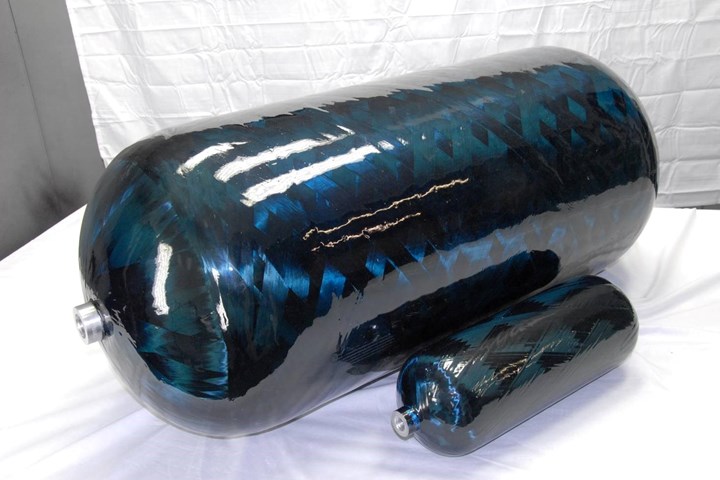CST Composites is positioning itself to be a “leading player” in the global green hydrogen supply chain, announcing a joint venture with Utah-based hydrogen storage tank company Optimum Composite Technologies on Friday.
The company is aiming to establish Australia’s first hydrogen vessel manufacturing facility, adding to the two specialist composite manufacturing facilities the company already operates in Kurnell and Ingleburn, both of which straddle Sydney’s south.
The joint venture with Optimum will enable this vision, the company said, by giving it access to Optimum’s technical expertise and intellectual property around composite pressure vessels which store hydrogen and natural gas.
The partnership will also give the Sydney company greater access to US markets, allowing it to leverage Optimum’s US facilities, customer base and supply chain.
In turn, CST Composites will expand its core capabilities in filament winding technology to support the growth of Optimum’s business in designing and producing composite pressure vessels.
“High-pressure gas storage vessels is one of the biggest and fastest-growing markets globally for advanced composites, particularly for filament-wound carbon fibre composites,” CST Composites’ managing director, Clive Watts, said.
The company says its plan will help advance Australia’s National Hydrogen Strategy, which has highlighted the need to develop the country’s supply chain infrastructure, including hydrogen storage tanks.
More so than other gas and liquid fuels, hydrogen is finicky to store because it is an extremely small molecule which causes various metals to become brittle and ultimately fracture. This means that traditional tanks and pipelines are largely unsuitable to host hydrogen, making storage one of the most frequently pointed to issues for the transport, and therefore adoption, of hydrogen as a ‘future fuel.’
CST Composites says in plans to pursue the considerable sums of government fundings being pumped into the hydrogen industry in the next decade as Australia vies to become a, if not the, global hydrogen superpower.
“We will be applying for the grants and financial support available to advance our projects, which focus on the innovative design and development of hydrogen and CPV [composite pressure vessel] products,” Watts said.
“We are planning to make a significant investment to grow our new joint venture,” he added.
The company has already received just shy of $833,000 in funding through round two of the federal government’s Manufacturing Modernisation Fund, listed under its parent company’s name WTG Pty Ltd. The government grant listing page says the total investment WTG is making to advance its carbon fibre capabilities is over $3.3 million.
Manufacturing facilities for hydrogen tanks is something major companies have begun moving into. For instance, South Korea’s Hanwha Solutions, of which Q Cells is a subsidiary, acquired the US hydrogen storage tank manufacturer Cimarron Composites in December 2020, and is seeking to invest over US$100 million to expand that arm of the business.
This content is protected by copyright and may not be reused. If you want to cooperate with us and would like to reuse some of our content, please contact: editors@pv-magazine.com.









2 comments
By submitting this form you agree to pv magazine using your data for the purposes of publishing your comment.
Your personal data will only be disclosed or otherwise transmitted to third parties for the purposes of spam filtering or if this is necessary for technical maintenance of the website. Any other transfer to third parties will not take place unless this is justified on the basis of applicable data protection regulations or if pv magazine is legally obliged to do so.
You may revoke this consent at any time with effect for the future, in which case your personal data will be deleted immediately. Otherwise, your data will be deleted if pv magazine has processed your request or the purpose of data storage is fulfilled.
Further information on data privacy can be found in our Data Protection Policy.